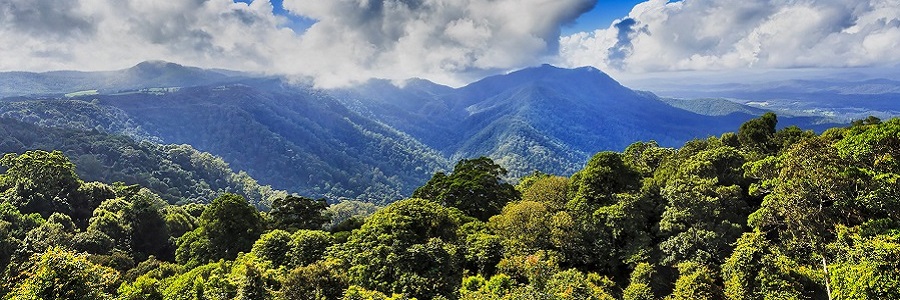Matters of National Environmental Significance (MNES)

Matters of National Environmental Significance are specified and protected by the Environment Protection and Biodiversity Conservation Act 1999.
Priority RFA information
Identify status and trends of Matters of National Environmental Significance:
- threatened species and ecological communities
- world heritage areas
- wetlands of international significance
- national heritage.
Sustainability Indicators
Inform measures and report on performance in relation to the following Sustainability Indicators:
Criterion 1: Conservation of biological diversity
1.1 Ecosystem diversity
- 1.1a Area of forest by forest type and tenure
- 1.1b Area of forest by growth stage
- 1.1c Area of forest in protected area categories
- 1.1d Fragmentation of forest cover
1.2 Species diversity
- 1.2a Forest-dwelling species for which ecological information is available
- 1.2b The status of forest-dwelling species at risk of not maintaining viable breeding populations, as determined by legislation or scientific assessment
- 1.2c Representative species from a range of habitats monitored at scales relevant to regional forest management
1.3 Genetic diversity
- 1.3b Native forest and plantations of indigenous timber species that have genetic resource conservation mechanisms in place
Criterion 4: Conservation and maintenance of soil and water resources
- 4.1a Area of forest land managed primarily for protective functions
- 4.1b Management of the risk of soil erosion in forests
- 4.1c Management of the risks to soil physical properties in forests
- 4.1d Management of the risks to water quantity in forests
- 4.1e Management of the risks to water quality in forests
Criterion 6: Maintenance and enhancement of long-term multiple socio-economic benefits to meet the needs of societies
6.4 Cultural, social and spiritual needs and values
- 6.4a Area of forest to which Indigenous people have use and rights that protect their special values and are recognised through formal and informal management regimes
- 6.4b Registered places of non-Indigenous cultural value in forests that are formally managed to protect those values
- 6.4c The extent to which Indigenous values are protected, maintained and enhanced through Indigenous participation in forest management
Criterion 7: Legal, institutional and economic framework for forest conservation and sustainable management
- 7.1a Extent to which the legal framework supports the conservation and sustainable management of forests
- 7.1b Extent to which the institutional framework supports the conservation and sustainable management of forests
- 7.1c Extent to which the economic framework supports the conservation and sustainable management of forests
- 7.1d Capacity to measure and monitor changes in the conservation and sustainable management of forests
- 7.1e Capacity to conduct and apply research and development aimed at improving forest management and delivery of forest goods and services
Monitoring activities
- Saving our Species program
Department of Planning, Industry and Environment - Environment, Energy and Science - Biodiversity and Conservation Division – Threatened Species and Ecosystems branch
Activity: Research, monitoring and reporting that tracks the progress of work to secure threatened species and ecological communities in the wild for the next 100 years. In the World Heritage areas, SoS management and monitoring actions are being delivered in partnership with volunteers, scientists, businesses, community groups and the NSW Government. There are currently over 70 active SoS projects in the NSW world heritage areas.
Timing: 2016 - 2021
More details on Saving our Species reports and Saving our Species MER - State of the Parks
NSW National Parks and Wildlife Service
Activity: Assessment framework used to evaluate management effectiveness and condition of natural and cultural assets across the park system. It is based on the International Union for Conservation of Nature (IUCN) best-practice guidelines Evaluating Effectiveness: A framework for assessing management of Protected areas
More details here
Research
See research priorities.
Outputs
Data is available in the following repositories.
- BioNet
Department of Planning, Industry & Environment – Environment, Energy and Science - Science, Economics and Insights Division – Remote Sensing and Landscape Science branch
Activity: Repository for biodiversity data in NSW, including species sightings, systematic flora surveys, threatened biodiversity, and vegetation classification and maps
Timing: 1984 – Ongoing
More details here - SEED (The Central Resource for Sharing and Enabling Environmental Data in NSW)
Department of Planning, Industry & Environment – Environment, Energy and Science - Science, Economics and Insights Division – Economics, Data Analytics and Insights branch
Activity: Contains publicly accessible land, air and water data from NSW Government agencies, including species sightings, vegetation change, vegetation mapping, Ramsar wetlands
Timing: 2016 – 2027/28
More details here
